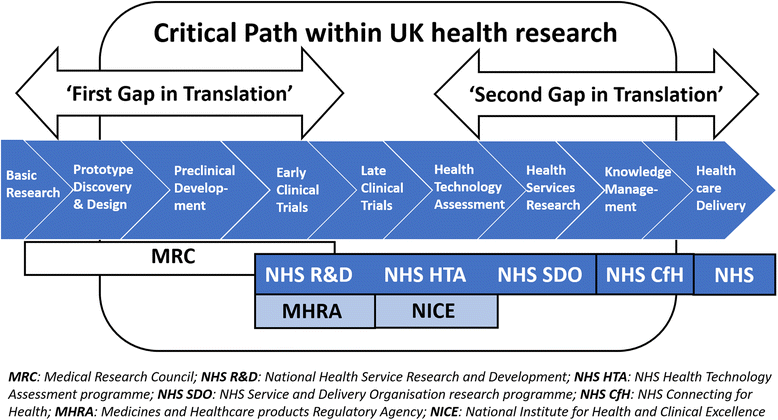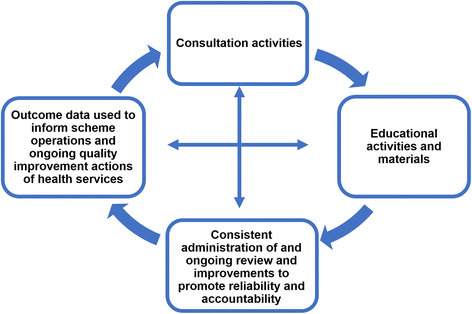When complexity science meets implementation science: a theoretical and empirical analysis of systems change
- PMID: 29706132
- PMCID: PMC5925847
- DOI: 10.1186/s12916-018-1057-z
When complexity science meets implementation science: a theoretical and empirical analysis of systems change
Abstract
Background: Implementation science has a core aim - to get evidence into practice. Early in the evidence-based medicine movement, this task was construed in linear terms, wherein the knowledge pipeline moved from evidence created in the laboratory through to clinical trials and, finally, via new tests, drugs, equipment, or procedures, into clinical practice. We now know that this straight-line thinking was naïve at best, and little more than an idealization, with multiple fractures appearing in the pipeline.
Discussion: The knowledge pipeline derives from a mechanistic and linear approach to science, which, while delivering huge advances in medicine over the last two centuries, is limited in its application to complex social systems such as healthcare. Instead, complexity science, a theoretical approach to understanding interconnections among agents and how they give rise to emergent, dynamic, systems-level behaviors, represents an increasingly useful conceptual framework for change. Herein, we discuss what implementation science can learn from complexity science, and tease out some of the properties of healthcare systems that enable or constrain the goals we have for better, more effective, more evidence-based care. Two Australian examples, one largely top-down, predicated on applying new standards across the country, and the other largely bottom-up, adopting medical emergency teams in over 200 hospitals, provide empirical support for a complexity-informed approach to implementation. The key lessons are that change can be stimulated in many ways, but a triggering mechanism is needed, such as legislation or widespread stakeholder agreement; that feedback loops are crucial to continue change momentum; that extended sweeps of time are involved, typically much longer than believed at the outset; and that taking a systems-informed, complexity approach, having regard for existing networks and socio-technical characteristics, is beneficial.
Conclusion: Construing healthcare as a complex adaptive system implies that getting evidence into routine practice through a step-by-step model is not feasible. Complexity science forces us to consider the dynamic properties of systems and the varying characteristics that are deeply enmeshed in social practices, whilst indicating that multiple forces, variables, and influences must be factored into any change process, and that unpredictability and uncertainty are normal properties of multi-part, intricate systems.
Keywords: Change; Complexity science; Culture; Health and medical research; Implementation science; Improvement; Speed; Systems innovation; Take up; Translation.
Conflict of interest statement
Competing interests
The authors declare that they have no competing interests.
Publisher’s Note
Springer Nature remains neutral with regard to jurisdictional claims in published maps and institutional affiliations.
Figures




References
-
- Kelly K. Out of Control: The New Biology of Machines, Social Systems and The Economic World. Boston: Addison-Wesley; 1994.
-
- Fitzgerald L. The diffusion of innovations: the translation and implementation of evidence-based innovation. In: Fitzgerald L, McDermott A, editors. Challenging Perspectives on Organizational Change in Health Care. New York: Taylor & Francis; 2017.
-
- Cooksey D. A Review of UK Health Research Funding. London: Stationary Office; 2006.
Publication types
MeSH terms
Grants and funding
LinkOut - more resources
Full Text Sources
Other Literature Sources

